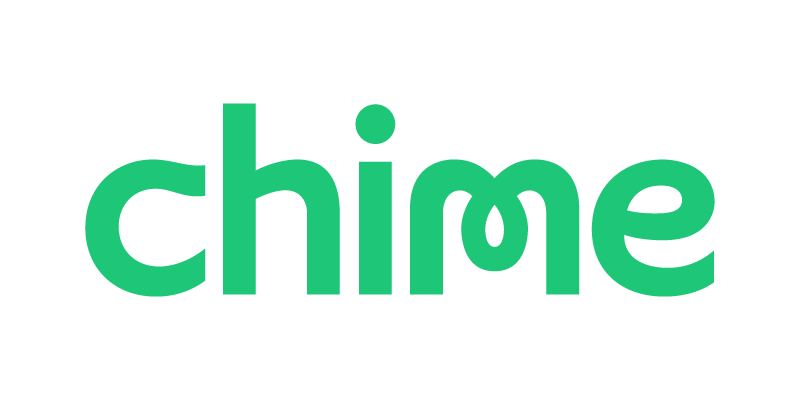What the Fed Rate Increase Means for Savings Accounts

Many or all of the products featured here are from our partners who compensate us. This influences which products we write about and where and how the product appears on a page. However, this does not influence our evaluations. Our opinions are our own. Here is a list of our partners and here's how we make money.
Federal Reserve officials completed a two-day meeting on July 26 and raised the federal funds rate for the fourth time this year, following seven consecutive rate increases in 2022. Previously, officials met in June and announced a pause on rate increases. But the Fed rate pause ended with this latest announcement. The new target range increased by 0.25 of a percentage point. It is now 5.25% to 5.50%.
While this increase isn’t as large as previous bumps, especially those in 2022, it is still likely to have an effect. Higher interest rates raise costs for borrowers, but they can also mean higher yields for savers. After all, when you have a savings account at a bank, you’re effectively letting the bank borrow your money, and the institution pays you interest in return.
The Federal Reserve raised rates to the highest levels in more than two decades, which is good news for your savings accounts. Take advantage of today’s high rates by opening a federally insured high-yield savings account.
Will savings rates go up?
A Fed rate increase doesn’t instantly change the rates your bank offers, but it can lead to an increase for some accounts. In a higher rate environment, banks may start raising rates on savings accounts to attract new customers. This puts competitive pressure on other institutions to increase their rates. If one bank starts, others are likely to follow.
» Learn more: What the Fed rate increase means for CDs
What is the federal funds rate?
The federal funds rate, or the “Fed rate,” is the interest rate that banks charge each other to borrow money overnight. According to the Federal Reserve, institutions borrow money and lend from their reserves after hours in order to meet regulatory requirements and to be ready to manage market conditions.
The funds rate is set by the Federal Open Market Committee, which the Federal Reserve uses to help adjust monetary policy based on economic conditions.
For example, raising rates can help ease inflation: A higher federal funds rate generally leads to higher rates for loans or credit cards, so households may be less willing to borrow money. That could lead to less spending, which could result in lower prices and less inflation. Higher federal funds rates also have implications for those who invest in loans and loan-backed securities, such as bonds. In a rising rate environment like the one we’ve been in for the last year or so, bonds that were purchased previously, when rates were lower, tend to have less value than newer bonds that pay more interest. If you have a portfolio of lower-interest bonds and decide to sell them before maturity (say, you need extra cash to pay bills), you’d likely have to sell them at a loss.
Higher interest rates and bank failures
The same interest rate risk can also apply to banks that hold bonds as part of their portfolios. On March 8, 2023, Silicon Valley Bank, headquartered in Santa Clara, California, announced that it sold a large portion of its bonds at a loss of $1.8 billion. Reportedly, the bank’s announcement led to a sense of panic that caused clients to pull their deposits out of the bank (what’s also called a bank run), ultimately leading to SVB’s collapse.
Since SVB’s failure, two more banks have failed, Signature Bank, based in New York, and San-Francisco-based First Republic Bank. Those financial institutions also reportedly faced problems competing in a higher-rate environment, with subsequent substantial withdrawals from customers.
Does the Fed rate increase affect FDIC insurance?
The federal funds rate is a separate subject from federal insurance, which allows bank customers to access their deposits in the event of a bank failure. Some accounts at banks, such as savings accounts, are typically federally insured by the Federal Deposit Insurance Corp., up to $250,000 per depositor, per ownership category (joint owners or a single owner, for example), per insured bank. If a bank fails, depositors can still access their money, up to the insured amounts.
If earning higher rates in your savings account means your balance will go above federal insurance limits, consider one of these strategies for protecting your money if you’re banking over $250,000. » Want to dig deeper? Read more about FDIC insurance at banks and NCUA insurance at credit unions

Member FDIC
SoFi Checking and Savings

4.50%
$0

Member FDIC
Citizens Access Savings

4.50%
$0.01

Member FDIC
CIT Bank Platinum Savings

5.05%
$5,000

Deposits are FDIC Insured
BMO Alto Online Savings Account

5.10%
$0
Take advantage by choosing a high-yield account
Practically everyone wants interest on their deposits. So any time there’s a Fed rate increase, it’s a good idea to check the interest rate on your savings accounts and shop around to see if there’s a better option. Not every bank will follow others in lifting its rates. Some consistently offer a low annual percentage yield of around 0.01%, and the national average savings account rate as of July 2023 is 0.42% APY, according to the FDIC. But online savings accounts tend to offer better rates – many times higher than that average – because institutions who offer these accounts don't have to operate expensive brick-and-mortar branches and can pass the savings on to customers in the form of higher rates and low (or no) fees.
Do high-yield savings account rates change?
Savings rates, including those for high-yield accounts, are variable and can change at any time. But the best savings accounts tend to offer consistently higher rates compared to their competition.
A higher APY can make a visible contribution to your bank balance. Say you have $10,000 in a savings account that earns a low 0.01% APY, which is typical for large banks. After a year, that balance would earn only about a dollar in interest. But put that amount in a high-yield savings account that earns a 4% APY, and it would earn more than $400 after a year. That interest would also earn interest over time, a feature known as compound interest. High-yield savings accounts may not make you rich, but you’ll automatically earn much more than you would with a lower rate option.
» Want to learn more about how APY changes are measured? Read our primer on basis points
Use a savings calculator to determine what your bank balance can be with different APYs and see how your money could grow.
See how APYs have moved at high-yield accounts versus regular accounts
September 2023 | August 2023 | July 2023 | June 2023 | May 2023 | April 2023 | March 2023 | February 2023 | January 2023 | December 2022 | November 2022 | October 2022 | September 2022 | August 2022 | July 2022 | June 2022 | May 2022 | |
|---|---|---|---|---|---|---|---|---|---|---|---|---|---|---|---|---|---|
Online institutions | |||||||||||||||||
Ally, Member FDIC. | 4.25% APY. | 4.25% APY. | 4.00% APY. | 3.85% APY. | 3.75% APY. | 3.75% APY. | 3.40% APY. | 3.40% APY. | 3.30% APY. | 3.30% APY. | 3.00% APY. | 2.35% APY. | 1.85% APY. | 1.85% APY. | 1.25% APY. | 1.00% APY. | 0.60% APY. |
CIT Bank, Member FDIC. | 5.05% APY. | 5.05% APY. | 4.95% APY. | 4.85% APY. | 4.75% APY. | 4.50% APY. | 4.05% APY. | 4.05% APY. | 4.05% APY. | 3.85% APY. | 3.60% APY. | 3.00% APY. | 2.10% APY. | 2.10% APY. | 1.90% APY. | 1.20% APY. | 0.90% APY. |
LendingClub, Member FDIC. | 4.50% APY. | 4.50% APY. | 4.25% APY. | 4.25% APY. | 4.25% APY. | 4.25% APY. | 4.00% APY. | 4.00% APY. | 4.00% APY. | 3.60% APY. | 3.25% APY. | 3.12% APY. | 2.07% APY. | 2.07% APY. | 2.07% APY. | 1.26% APY. | 0.85% APY. |
National brick-and-mortar banks | |||||||||||||||||
Bank of America, Member FDIC. | 0.01% APY. | 0.01% APY. | 0.01% APY. | 0.01% APY. | 0.01% APY. | 0.01% APY. | 0.01% APY. | 0.01% APY. | 0.01% APY. | 0.01% APY. | 0.01% APY. | 0.01% APY. | 0.01% APY. | 0.01% APY. | 0.01% APY. | 0.01% APY. | 0.01% APY. |
Chase Bank, Member FDIC. | 0.01% APY. | 0.01% APY. | 0.01% APY. | 0.01% APY. | 0.01% APY. | 0.01% APY. | 0.01% APY. | 0.01% APY. | 0.01% APY. | 0.01% APY. | 0.01% APY. | 0.01% APY. | 0.01% APY. | 0.01% APY. | 0.01% APY. | 0.01% APY. | 0.01% APY. |
With high inflation, why put money in any savings account?
Inflation erodes spending power, since it means goods and services are more expensive than they were previously. So when the inflation rate is considerably higher than the average national savings account rate — as it has been for more than two years — it may seem that parking money in a savings account isn’t beneficial.
But the larger reason for saving cash is to have easy access to money in case you need it quickly, say, for an unexpected car repair expense. Setting aside funds for financial emergencies can help prevent you from going into debt, which can be costly, especially when interest rates rise.
Having at least three to six months’ worth of expenses tucked away in an emergency savings fund is ideal, but anything you can put away would help, and it adds up. For example, if you put $10 a week into savings and don’t have to dip into the funds, it’ll add up to more than $500 after a year. And having that money earn interest is a bonus way to have your dollars work for you.
If you have a fully funded emergency savings account, and you have extra cash that you don’t need to access right away, it may be worth looking at other short-term options to grow your money. Some certificates of deposit (which have also seen recently increased rates) earn a better yield than the best savings accounts. But you will need to leave the money parked in the account for a predetermined time period — a year or more, for example. (Learn more about these bonds and other ways to protect your spending power in this article). For longer-term goals, such as retirement, it makes sense to look into investing.
The federal funds rate is worth paying attention to. With increasing rates, loans are generally more costly, but savings accounts can earn higher yields. For those who have little or no debt and can contribute to savings, a Fed rate increase could be a financial opportunity.
On a similar note...









